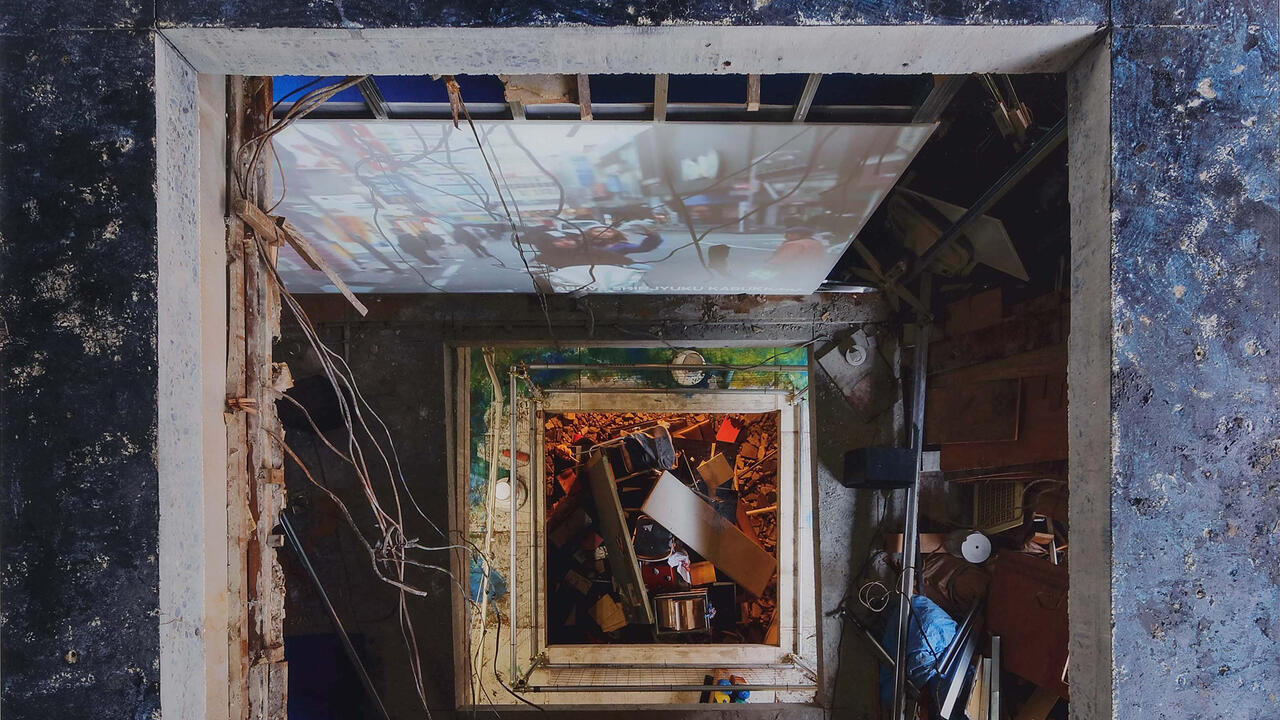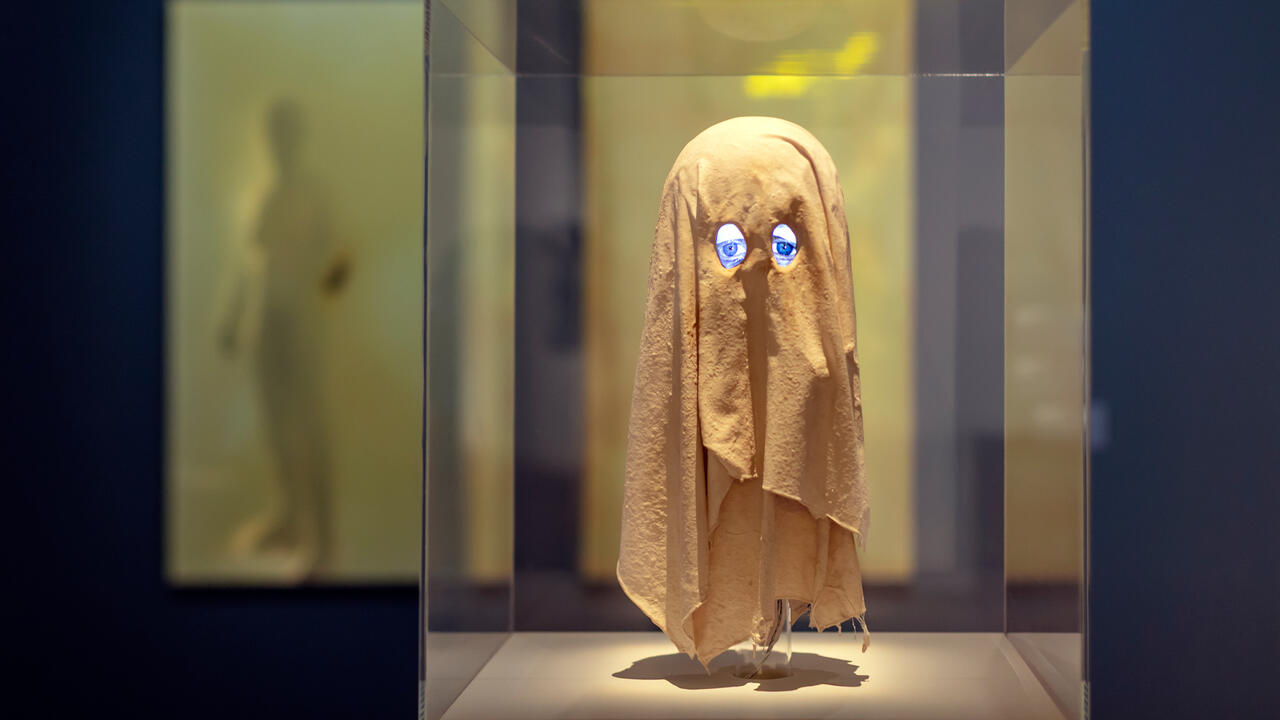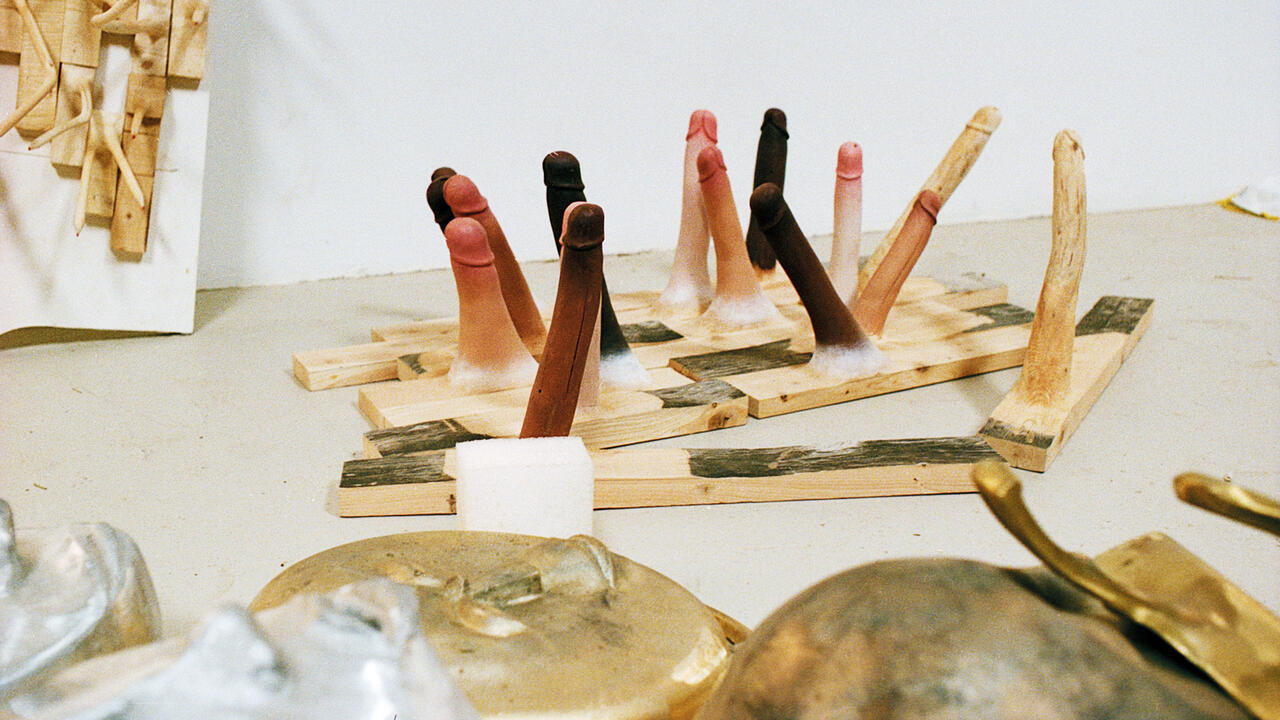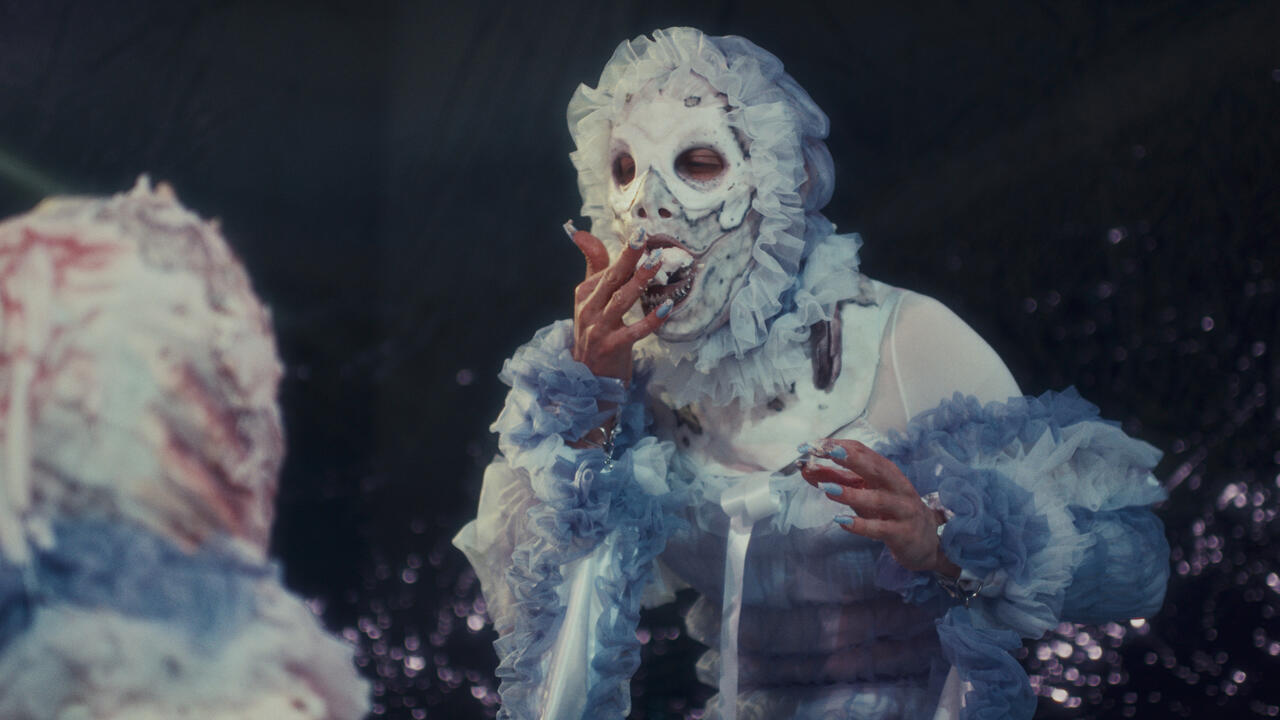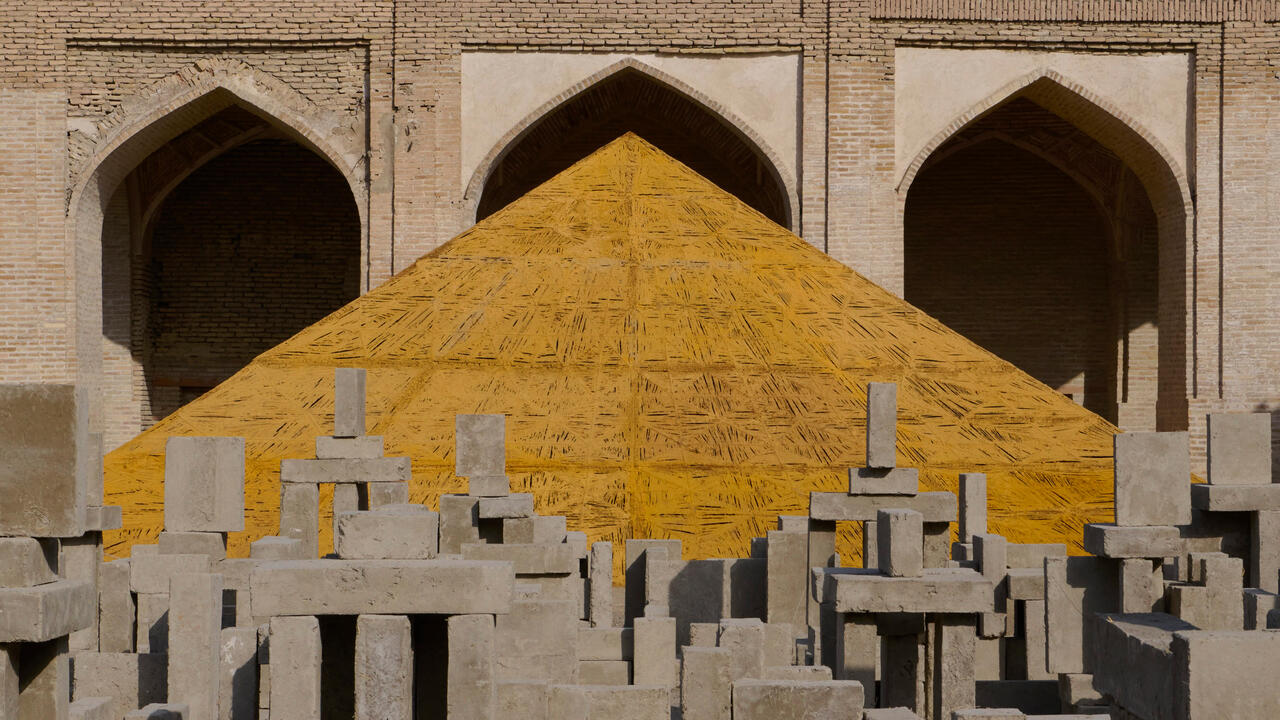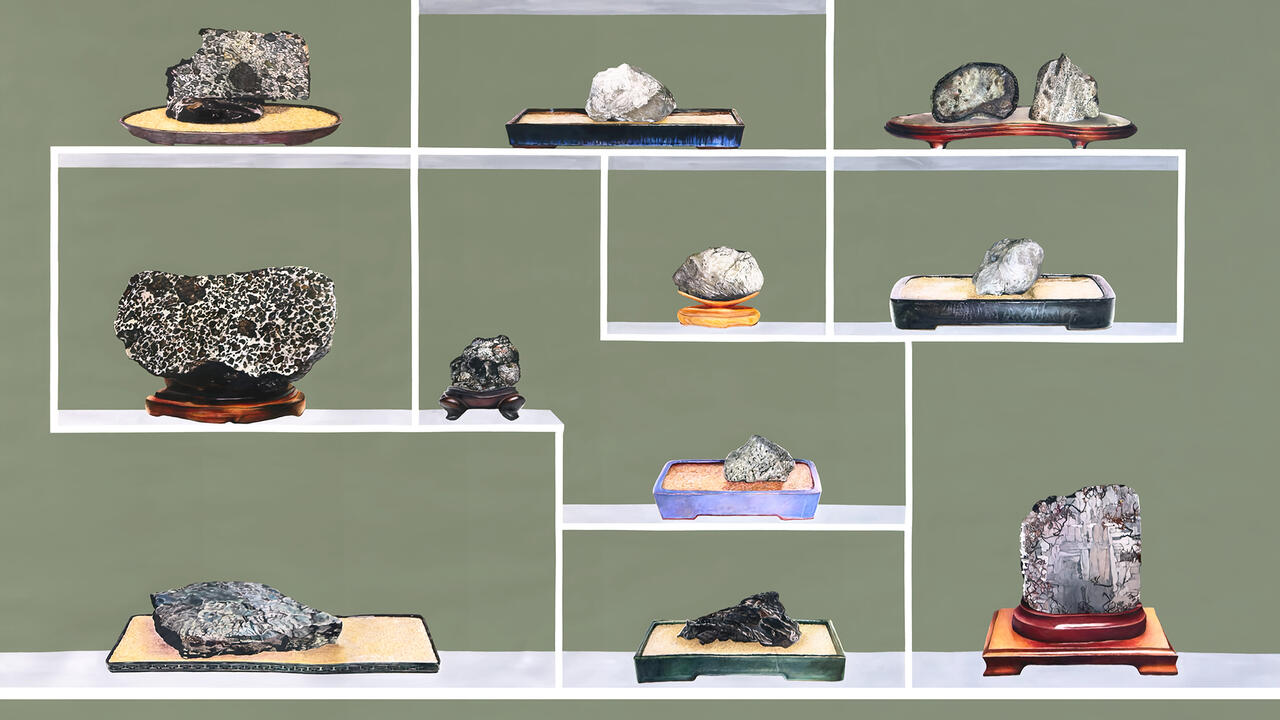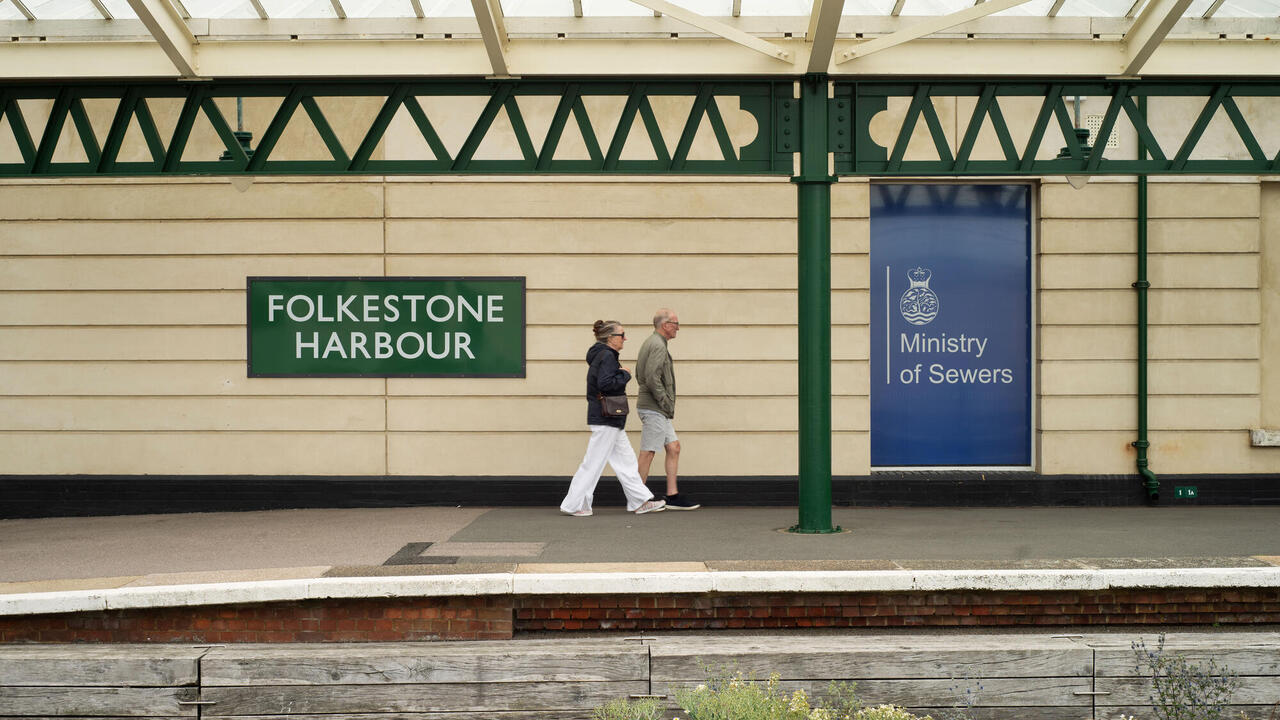Critic’s Guide: Brussels
From the linguistic nature of God to Belgium’s colonial past: the best of the capital's current shows
From the linguistic nature of God to Belgium’s colonial past: the best of the capital's current shows


Rinko Kawauchi
Meessen De Clercq
18 November – 24 December
‘The river embraced me’ is the result of a collaboration between Rinko Kawauchi and residents of Kumamoto, a city on the Japanese island of Kyushu, who shared with the artist their memories of home and places of particular importance to them. The artist later visited those places, waiting sometimes for months, in anticipation of a certain season or weather system, to photograph them. Kawauchi manages light like an Impressionist, working with lens flares and overexposure, sometimes washing out her photographs in a pastel haze that produces the sense of a half-remembered experience. She also flits between landscape and square formats and juxtaposes macro photography – a memorable image of an iridescent green insect resting in someone’s open palm – with wide shots of landscapes and cityscapes. In this varied and dynamic installation, text fragments from her collaborators’ descriptions of Kumamoto have been applied to the white walls in delicate grey vinyl. They hover near the photographs, suggesting disembodied voices or memories floating off into the ether.
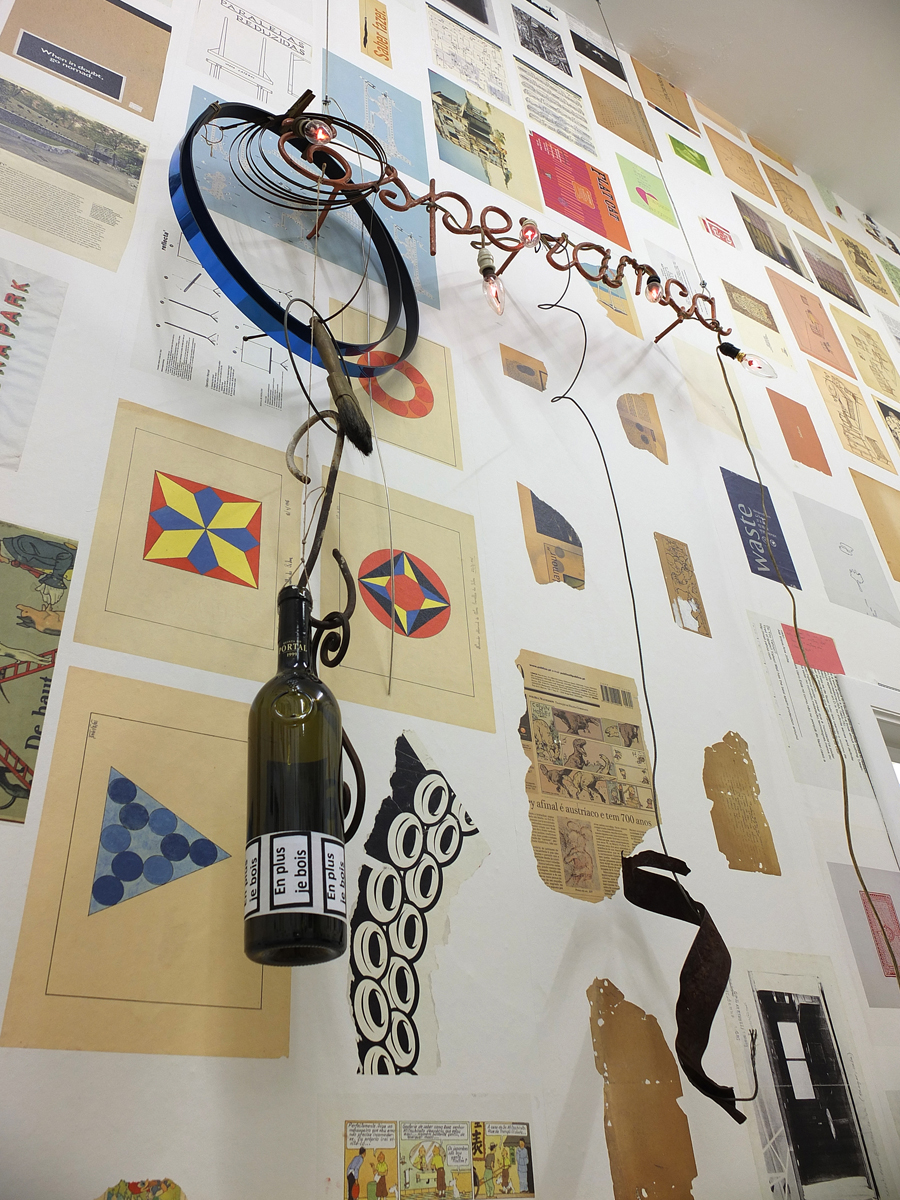
Ana Jotta
Etablissements d’en face
12 November – 23 December
For this lively presentation of Ana Jotta’s work since 1980, the walls over two floors of Etablissements d’en face have been lined with Cassandra (2016), a punchy wallpaper that features images of objects and documents that the Portuguese artist has collected during her lifetime. These ‘footnotes’, to use her term, include advertisements, hand-written jokes and puns, stickers and torn pages from books and magazines. Together, they form a mosaic of relics from different decades and countries. Born in Lisbon in 1946, Jotta studied at the School of Architecture and Visual Arts at La Cambre in Brussels in the late 1960s and early ’70s. The influence of this time and her enjoyment of the French language are evident in her literary references, which include the cover of ‘Que sais-je?’, a popular series of books and manuals covering topics across academic disciplines, as well as pages torn from Tintin books. Her sculptures are equally layered and associative: the whimsical Night Light (1981) is a functional lamp made from a pair of slippers, adorned with mussels, sea urchins and jigsaw pieces.

Connor McNicholas
Super Dakota
10 November – 21 December
This is Super Dakota’s first solo show of young American artist Connor McNicholas, whose work displays a distilled confidence of someone far beyond his years. In a series of framed works, found Polaroids, turned image-side-down to reveal the captions written on the back, are juxtaposed with sketches based on those descriptions. A photograph of a couple posing in the garden of the hospital where Vincent Van Gogh died is illustrated with hastily drawn lines that evoke the transience of life. The exhibition also includes Untitled (five-part construction) (2016), an alterable sculptures made from painted, padded, and transparent shapes that can be rearranged at will to hang on the wall or rest on the floor. The elements of the work are pleasingly handmade, with visible paint strokes and pencil markings. McNicholas does not entirely eschew the digital, though does it via an analogue update; Untitled (endless loop #1) (2016) combines the sounds made by two early synthesizers, the Moog and the Buchla, and has been burned onto audio CDs that are free for visitors to take away.

Thierry De Cordier
Royal Museums of Fine Arts of Belgium
8 November 2016 – 22 January 2017
It took Thierry De Cordier five years to make this series of 12 monumental Iconotextures, ink on paper text pieces which incorporate as many of the arguments for and against the existence of God as the artist could summon. The series is an impressive material diatribe that tackles the inherently linguistic nature of God. It is also a biographical record: the French-language statements and aphorisms that compose it are the result of several decades during which the artist has grappled with the concept of God. Most of the text on the 3.5 metre-high panels is unreadable, vanishing high above eye-level, while some areas overlap or deteriorate into a frenzied scrawl. From a distance the series looks like a cache of ancient scrolls or codices, promising a meaning that, on closer inspection, deteriorates into contradiction and confusion. Many of the historic works in the Royal Museum are devoted to religion, and the stately room where De Cordier’s Iconotextures have been installed operates as a kind of interrogative chapel, a space in which to ponder the current relevance of religion, in relation to both works in the museum and to the world beyond.

Leigh Ledare
Office Baroque
10 November – 23 December
Three projects exploring human behaviour and pathologies intertwine in this exhibition of works by the American artist Leigh Ledare. A riveting video, The Large Group (Zurich) (2016), documents a session during a three-day immersive psychology experiment, organized as part of this year’s Manifesta 11. The group dynamics reach a dramatic crescendo when verbal abuse is meted out by one participant and then contested by others. For Vokzal (2016), Ledare filmed people around Moscow’s main train stations using a small 16mm camera, and edited the resulting footage into three 20-minute films in which everyday life, minor dramas and illicit transactions including drug deals and prostitution are played out. The films are projected through openings in a plasterboard corridor built to bisect the gallery, so that they are projected onto visitors’ bodies as they walk down the narrow passageway, emphasizing the voyeuristic nature of the work. For The Walk (2016), Ledare combined postcards of Soviet character actors and purebred dogs, alluding to the adage that dogs resemble their owners, and pages torn from R.D. Laing’s 1970 book of poems, Knots. Each composition has been stained with soap, food, paint or excrement, to symbolize a different psychic process, and then sealed between two plates of glass.

Kniebank (Wolo) (Kneebench) [Wolo], 2016, oak and leather, 8 x 46 x 21 cm. Courtesy: the artist and MANIERA, Brussels
Sophie Nys
MANIERA
16 November 2016 – 14 January 2017
Maniera invites artists and architects to develop furniture and objects for use, offering them an excursion from their usual practice and an opportunity to turn their attention to questions of design and functionality. Belgian artist Sophie Nys’s work alludes to historical furniture she has encountered in person or in photographs. She guesstimates dimensions and designs and adapts them to contemporary use. Her new series is titled ‘Onkelhaft’ (Avuncular, 2016), a reference to the figure of the uncle, which she sees as simultaneously reassuring and threatening. Tafel / Stoel (Wolo) (Table / Chair [Wolo], 2016) is a convertible object, reminiscent of American colonial hutch tables, while Kniebank (Wolo) (Kneebench [Wolo], 2016) is an intriguing wood and leather platform, based on a museum object whose use is unknown but could be related to prayer or to industry. For her part, Belgian artist Valérie Mannaerts has made several ceramic plant pots and an exquisite padded silk kimono decorated with her drawings and paintings, which also functions as a room divider when it is hung on a metal and wood frame. Arbalette (Crossbow, 2016) fulfils some of the various capacities of textile: its ability to bear imagery, to clothe the body and to divide space.

‘Congo Art Works: Popular Painting’
Bozar
7 October 2016 – 22 January 2017
Belgium’s colonial past is justifiably the subject of ongoing examination and revision by the country’s cultural institutions, not least The Royal Museum for Central Africa (RMCA), which was built in 1898 as a colonial showcase for King Leopold II’s Congo. The RMCA has been closed for renovations since 2013 and until it reopens in 2018, it is organizing a number of pop-up projects, including this exhibition of Congolese painting at the Bozar. Featuring works made between 1968 and 2012, the exhibition addresses the status of ‘popular’ paintings, which were often commissioned by Congolese families to depict scenes from daily life, politics, economics and gender relations. The exhibition also includes older artefacts from the RMCA, which illuminate discussions around the influence of colonial taste and culture on Congolese art not least the discrimination against depictions of modernity in favour of romantic jungle imagery, and the demand for ‘tourist art’ that would satisfy the European taste for primitive art. The exhibition groups paintings to show recurring imagery painted by successive generations, such as the archetypal scene of a white colonist whipping a prostrate Congolese, or allegories involving wild animals, as well as more recent works depicting bustling urban scenes and satirical storyboards about corrupt governments.
Lead image: Thierry De Cordier, Iconotextures (detail), 2011-16, 12 drawings with royal blue ink writing on paper, each 3 x 1.5 m © Courtesy: Thierry De Cordier & Xavier Hufkens, Brussels








